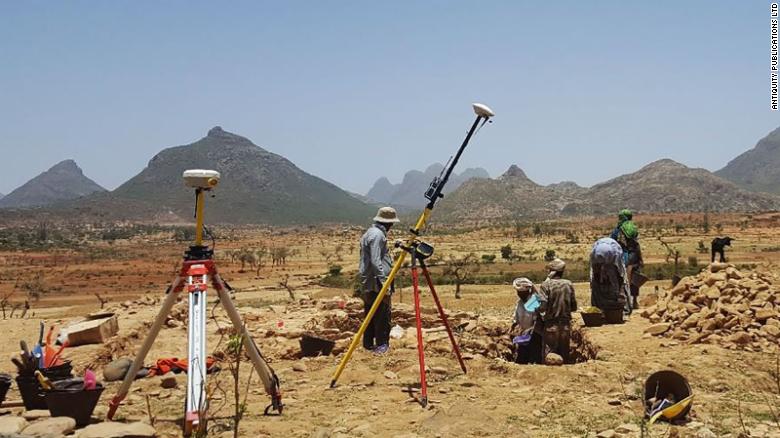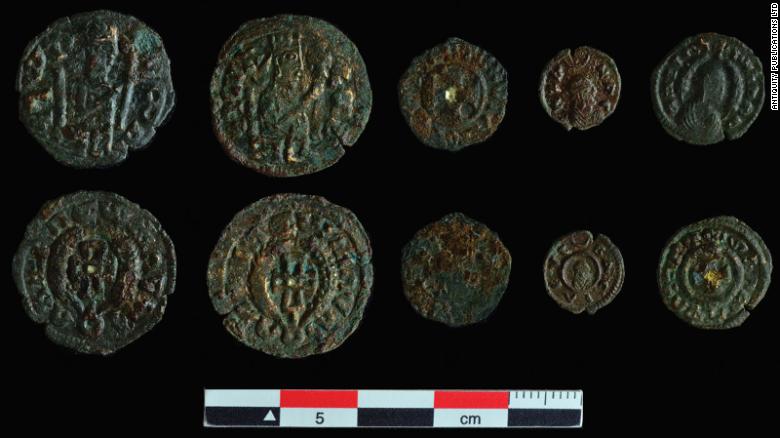Archaeologists have uncovered an ancient buried town in Ethiopia that was inhabited for 1,400 years.
The town is called Beta Samati, a key hub of trade and commerce, linking the capital Aksum with the Red Sea and beyond and it was part of a civilization called Aksum, reported to have dominated East Africa for centuries.
The town traded with other great powers like the Roman Empire. Built after King Ezana, he converted the empire to Christianity in the mid-fourth century AD. According to researchers, such buildings were key early places of Christian worship in Ethiopia and the site at Beta Samati appears to be one of the first in the Aksumite kingdom.

It is believed that the buried town contains one of the oldest churches in sub-Saharan Africa which was inhabited for some 1,400 years before it became lost into the highlands of northern Ethiopia around AD 650, according to the researchers.
Local residents in the area of the discovery had told the researchers to investigate a hill near the modern village of Edaga Rabu. It turned out to be a 25-meter high mound formed by waste and debris accumulated over generations of occupation.
“It was part of the local oral tradition. They knew it was an important place but they didn’t know why,” associate professor of archeology at Johns Hopkins University and lead author of the research published in the journal Antiquity, Michael Harrower, said.
“The Empire of Aksum was one of the world’s most influential ancient civilizations, but it remains one of the least widely known. Beta Samati spans Aksum’s official conversion from polytheism to Christianity and the rise of Islam in Arabia,” he added.
The town currently lies near Ethiopia’s border with Eritrea with its radiocarbon dating implying that people started living in the town around 750 BC, through the Aksumite era.
Even though he wasn’t involved in the excavation, Aaron Butts, a professor of Semitic and Egyptian languages at Catholic University in Washington, DC, said: “The archeological data combined with the radiocarbon dating suggests that the basilica stems from the fourth or perhaps early fifth century, making it certainly among the earliest known churches in sub-Saharan Africa. In addition, given the reliability of the archeological data combined with the radio-carbon dating, it seems to be the earliest securely datable church in Sub-Saharan Africa.”

The buildings and artifacts uncovered include a basilica dating back to the fourth century, gold ring, coins, inscriptions and pottery and they all reveal the importance of the city during Aksumite times.
“Relics uncovered at the site showed Roman, pagan and Christian influences, illustrating the “cultural diversity of this enigmatic civilization,” the study said.
The ring is described as a gold Roman-style ring with an unusual icon symbolizing a bull. A soft-stone pendant was also recovered outside the basilica with a cross and what seems like an inscription in ancient Ethiopic that reads “venerable.”

“Usually we are searching for scholarly information and scientific information, not necessarily for gold. But I frequently get asked by all sorts of people ‘did we find any gold?’ and, yeah, we actually did find some gold,” Harrower told CNN.
“And it paints an important line of evidence. The ring looks very Roman in its composition and its style but the insignia of that bull’s head is very African and is very unlike something you would find in the Mediterranean world and shows the kind of interaction and mixing of these different traditions.”
He, however, hopes that the local community would benefit from the discovery of the ring when it goes on display locally.
![An inscription in Ge'ez or ancient Ethiopic found just outside the eastern basilica wall. It is thought to read: Christ [be] favorable to us.](https://cdn.cnn.com/cnnnext/dam/assets/191211080051-03-ethiopia-buried-town-discovery-scn-exlarge-169.jpg)










